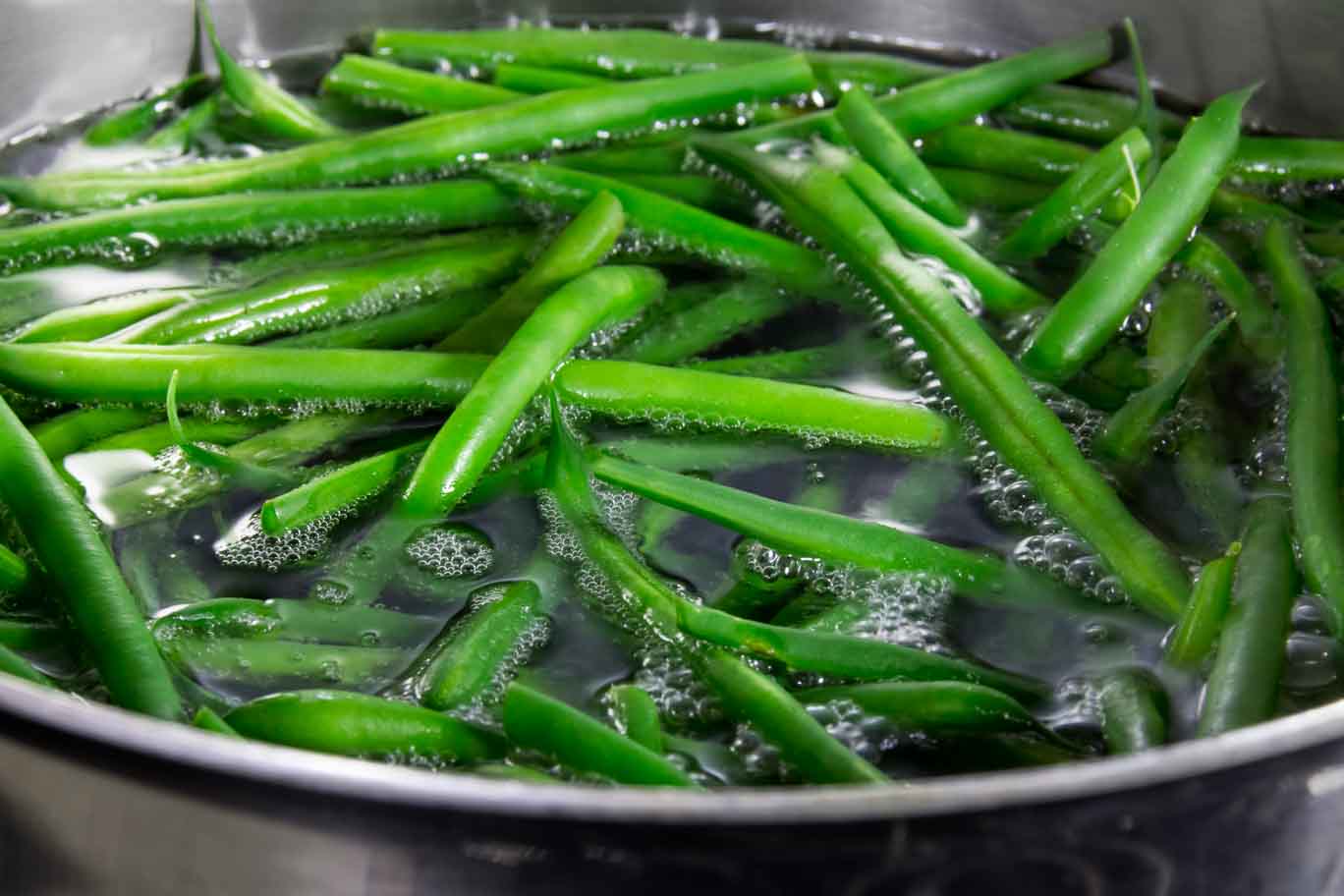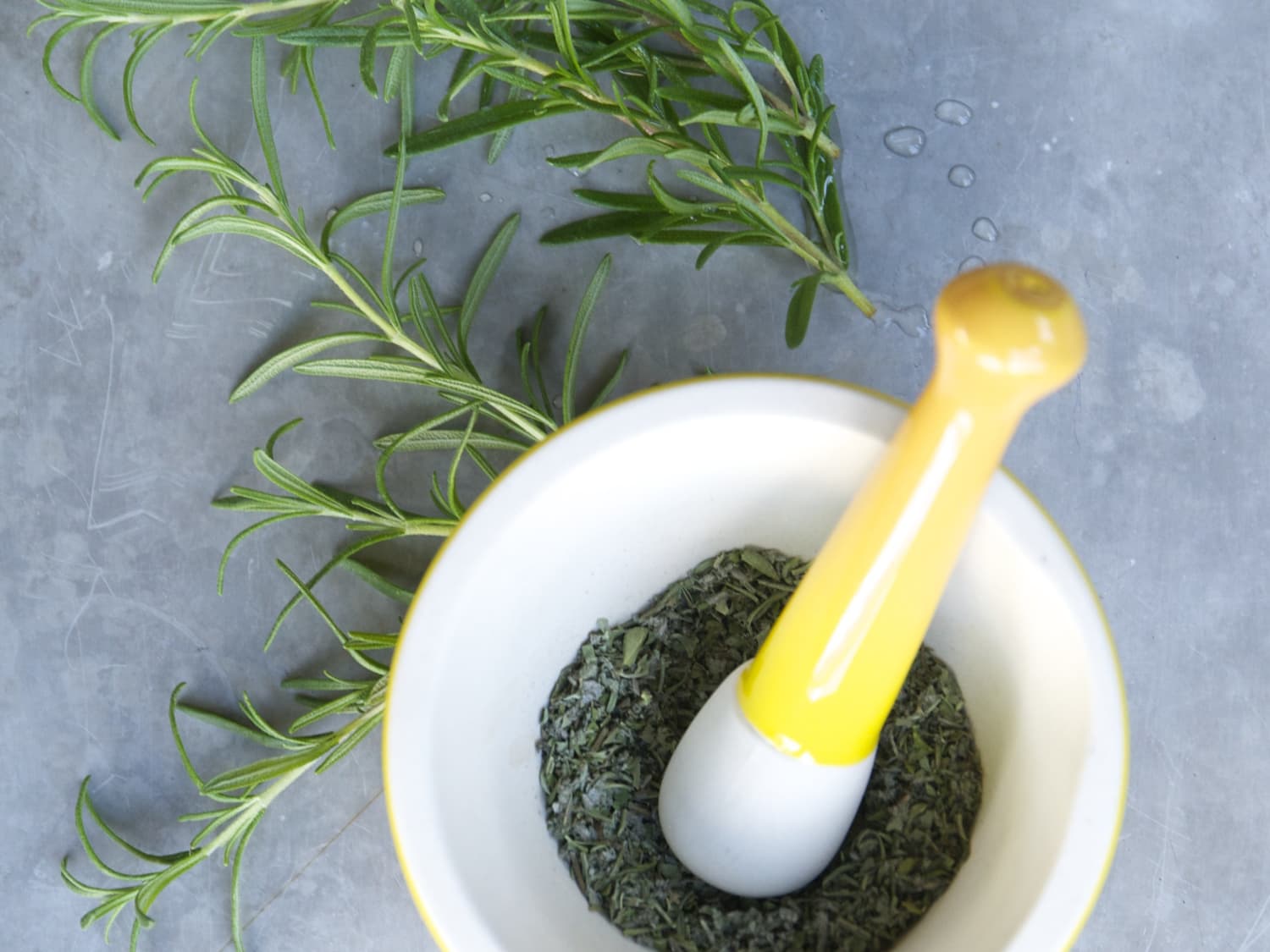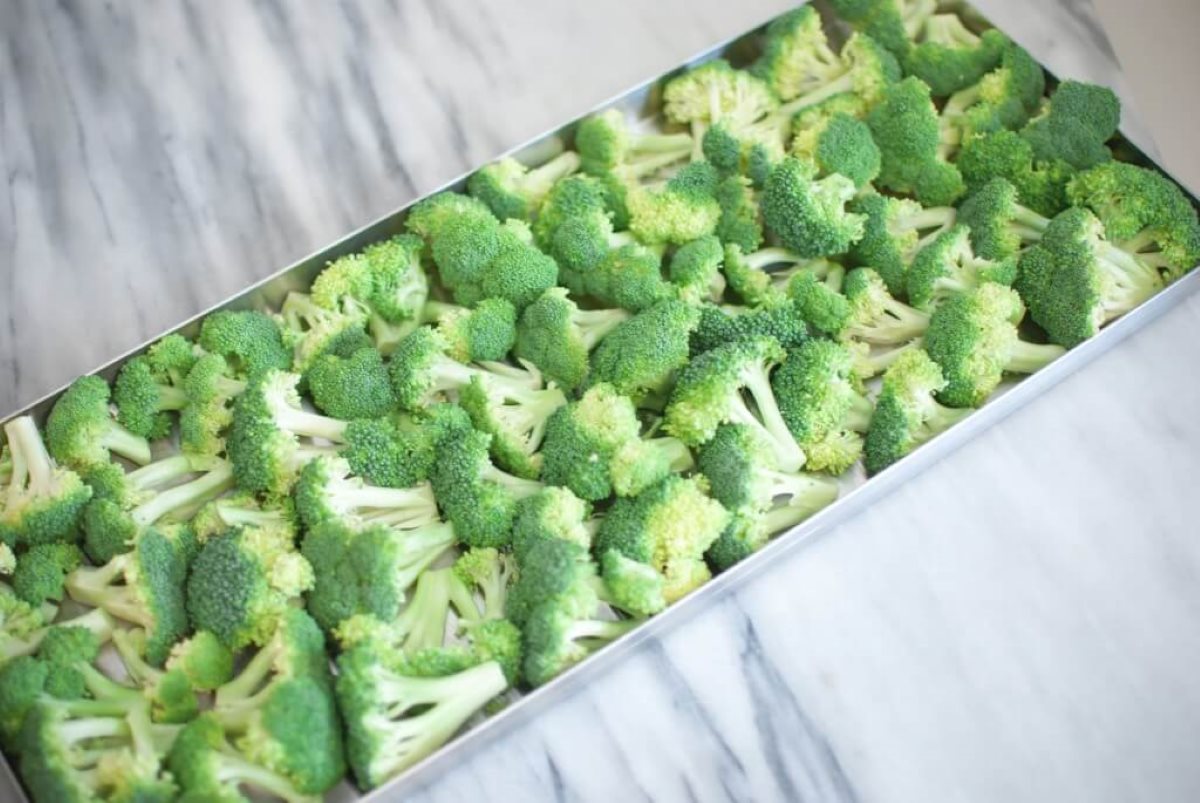Home>Gardening Techniques>DIY Projects>How To Freeze Thyme And Rosemary


DIY Projects
How To Freeze Thyme And Rosemary
Published: February 2, 2024
Learn how to freeze thyme and rosemary with easy DIY projects. Preserve the freshness of your herbs for future use with these simple steps.
(Many of the links in this article redirect to a specific reviewed product. Your purchase of these products through affiliate links helps to generate commission for Chicagolandgardening.com, at no extra cost. Learn more)
Table of Contents
Introduction
Welcome to the world of DIY projects! Whether you’re a seasoned DIY enthusiast or just getting started, there’s something special about taking on projects yourself and seeing the satisfying results. From building furniture to fixing household items, the possibilities are endless.
In this article, we will explore the world of freezing thyme and rosemary. These two herbs are not only popular choices in the culinary world but also have a plethora of health benefits. Freezing them allows you to enjoy their freshness and flavors all year round.
So, why freeze thyme and rosemary? Well, these herbs have a relatively short shelf life when stored fresh. By freezing them, you can prevent them from spoiling and preserve their flavors and aromas for an extended period. Whether you have an abundance of these herbs in your garden or you want to take advantage of a sale at your local market, freezing them provides a convenient solution.
Here, we will delve into the step-by-step process of freezing thyme and rosemary, providing you with everything you need to know to preserve these herbs for future use. From preparation and freezing methods to storage tips and inventive ways to use them, this article aims to be your ultimate guide in freezing thyme and rosemary.
So, let’s roll up our sleeves, gather our DIY spirit, and embark on this journey of freezing thyme and rosemary!
Benefits of Freezing Thyme and Rosemary
Freezing thyme and rosemary not only allows you to prolong the shelf life of these herbs but also offers several benefits that make them a worthy addition to your kitchen. Here are some of the advantages of freezing thyme and rosemary:
- Preserving Freshness: Thyme and rosemary are known for their bold flavors and aromatic qualities. Freezing these herbs ensures that their freshness is locked in, allowing you to enjoy the same vibrant flavors even after months of storage.
- Convenience: By freezing thyme and rosemary, you always have these herbs on hand whenever you need them. No need to worry about running out of fresh herbs or making a last-minute trip to the store. Simply reach into your freezer and grab the amount you need for your recipe.
- Cost-effective: Buying herbs in bulk and freezing them can be a cost-effective way to have a steady supply throughout the year. By taking advantage of seasonal sales or harvesting herbs from your garden, you can freeze thyme and rosemary when they are abundant and use them as needed.
- Time-saving: With frozen thyme and rosemary, you can save time on prep work. No more washing, chopping, or dealing with wilted herbs. Freezing them allows you to skip these steps and jump right into adding the herbs to your culinary creations.
- Versatility: Frozen thyme and rosemary can be used in a variety of dishes. Whether you’re making soups, stews, marinades, or even desserts, having these herbs readily available in your freezer opens up a world of flavor possibilities.
With all these benefits, it’s clear that freezing thyme and rosemary is a smart choice for any home cook. Now that we understand the advantages, let’s move on to the preparation process and the different methods of freezing thyme and rosemary.
Preparation
Before freezing thyme and rosemary, it’s important to ensure proper preparation to maintain their quality. Here are the steps to follow:
- Wash the Herbs: Start by rinsing the thyme and rosemary under cool, running water. Gently shake off any excess water and pat them dry with a clean kitchen towel or paper towels.
- Remove Stems and Leaves: For thyme, hold the top of the stem with one hand and use the other hand to slide your fingers down the stem to remove the leaves. Discard the woody stems. For rosemary, strip the leaves off the stem by holding the top and running your fingers in the opposite direction of the growth.
- Chop or Leave Whole: Decide whether you want to freeze the herbs chopped or whole. Chopped herbs are convenient for adding directly to recipes, while whole herbs can be used as garnishes or infused into oils or vinegars.
- Label and Date: To avoid confusion later, label your storage containers or freezer bags with the name of the herb and the date frozen. This will help you easily identify and use the herbs later on.
Once you have completed the preparation process, it’s time to move on to the specific methods of freezing thyme and rosemary. The next sections will provide step-by-step instructions for each herb, ensuring that you can preserve their flavors and quality effectively.
Freezing Thyme
Thyme is a versatile herb that adds a distinctive flavor to a wide range of dishes. Freezing thyme allows you to enjoy its freshness and aroma even when it’s not in season. Here’s how you can freeze thyme:
- Prepare the Thyme: Wash the thyme sprigs under cool, running water and pat them dry with a kitchen towel or paper towels.
- Remove Leaves from Stems: Hold the top of the thyme sprig with one hand and use your other hand to slide your fingers down the stem to remove the leaves. Discard the woody stems.
- Chop or Leave Whole: Decide whether you want to freeze the thyme chopped or as whole sprigs. Chopped thyme is convenient for adding directly to recipes, while whole sprigs can be used for garnishing dishes or infusing into oils.
- Portion and Pack: If you choose to chop the thyme, divide it into small portions and place them in freezer-safe containers or freezer bags. If you prefer to freeze the thyme as whole sprigs, arrange them neatly in the containers or bags.
- Label and Freeze: Label the containers or bags with the name and date, then place them in the freezer. It’s recommended to use the frozen thyme within 3 to 6 months for the best flavor, although it can be safe to use for a longer period.
By following these simple steps, you can preserve the fresh flavors of thyme and have it readily available for your culinary endeavors. Whether you’re making a hearty stew or a fragrant sauce, having frozen thyme on hand adds an exquisite touch to your recipes. Now, let’s move on to the process of freezing rosemary.
Freezing Rosemary
Rosemary is an aromatic herb that adds a delightful flavor to numerous dishes. By freezing rosemary, you can ensure that its vibrant taste and aroma are preserved. Here’s how you can freeze rosemary:
- Prepare the Rosemary: Rinse the rosemary sprigs under cool water to remove any dirt or debris. Gently pat them dry with a kitchen towel or paper towels.
- Remove Leaves from Stems: Hold the top of the rosemary sprig with one hand and use your other hand to strip the leaves off the stem by running your fingers in the opposite direction of the growth.
- Chop or Leave Whole: Decide whether you want to freeze the rosemary chopped or as whole sprigs. Chopped rosemary is ideal for adding directly to dishes, while whole sprigs can be used for garnishing or infusing into oils or vinegars.
- Portion and Pack: If you choose to chop the rosemary, divide it into small portions and place them in freezer-safe containers or freezer bags. If you prefer to freeze the rosemary as whole sprigs, arrange them neatly in the containers or bags.
- Label and Freeze: Label the containers or bags with the name and date, then place them in the freezer. It’s recommended to use the frozen rosemary within 3 to 6 months for the best flavor, although it can be safe to use for a longer period.
Freezing rosemary allows you to enjoy its distinct flavor and aroma in your cooking all year round. Whether you’re preparing roasted meats, savory stews, or flavorful marinades, having frozen rosemary on hand adds a delightful touch to your culinary creations. Now that you know how to freeze both thyme and rosemary, let’s move on to the next section to learn about storing these frozen herbs.
Storing Frozen Thyme and Rosemary
Proper storage is key to maintaining the quality and freshness of frozen thyme and rosemary. Here are some guidelines for storing these herbs:
- Freezer-Safe Containers: Use freezer-safe containers or freezer bags to store the frozen thyme and rosemary. Make sure they are airtight to prevent freezer burn and moisture loss.
- Portion Control: Consider portioning the herbs according to your recipe needs. This way, you can easily grab the desired amount without thawing the entire batch.
- Labeling: Label the containers or bags with the name of the herb and the date it was frozen. This will help you keep track of their freshness and ensure you use them within the recommended timeframe.
- Freezer Placement: Store the containers or bags in an organized manner, making sure they are not overcrowded. This will help maintain a consistent temperature and prevent the herbs from being crushed.
- Temperature and Duration: Set your freezer to a temperature of 0°F (-18°C) or lower to ensure optimal preservation. Frozen thyme and rosemary can maintain their quality for 3 to 6 months, although they may still be safe to consume for a longer period.
When it’s time to use the frozen thyme or rosemary, you can easily remove the desired portion and return the rest to the freezer. Avoid thawing and refreezing the herbs repeatedly, as this can affect their texture and flavor.
With proper storage, you can enjoy the flavors and aromas of thyme and rosemary in your cooking long after the growing season has ended. Next, let’s explore some tips for using frozen thyme and rosemary in your recipes.
Tips for Using Frozen Thyme and Rosemary
Using frozen thyme and rosemary in your recipes is incredibly convenient, but there are a few tips to keep in mind to ensure the best results. Consider these tips when using frozen herbs:
- Directly Add to Recipes: Since freezing helps to preserve the flavors of thyme and rosemary, you can add them directly to your recipes without thawing. The herbs will thaw quickly once they are added to warm or hot dishes.
- Adjust Quantity: Keep in mind that frozen herbs can be more concentrated in flavor than fresh herbs. It’s best to start by adding a little less than the recommended amount and adjust to taste as you cook.
- Infuse Liquids: Frozen thyme and rosemary can be infused into liquids like oils, vinegars, or broths. This process allows the flavors to infuse over time, enhancing the taste of your culinary creations.
- Crush or Grind: If you prefer a finer texture, you can crush or grind the frozen herbs before adding them to your dishes. This is particularly useful when making herb rubs or marinades.
- Use as Garnish: Sprinkle a few whole frozen sprigs of thyme or rosemary on top of soups, stews, or roasted dishes as a garnish. This adds a touch of freshness and visual appeal.
- Experiment with Flavors: Don’t be afraid to experiment and get creative with frozen thyme and rosemary. Try incorporating them into new recipes or combining them with other herbs and spices for unique flavor combinations.
Remember, even though frozen thyme and rosemary may not have the same texture as fresh herbs, they still retain their flavor and aroma, making them a valuable addition to your culinary endeavors.
Now that you have learned about freezing, storing, and using thyme and rosemary, you can embark on your DIY culinary adventures with confidence. These frozen herbs will elevate your dishes, bringing their vibrant flavors and aromas to every bite. So go ahead, open up your freezer, and let the magic of frozen herbs transform your recipes!
Conclusion
Freezing thyme and rosemary is a practical and effective way to preserve these herbs’ freshness, flavors, and aromas. By following the simple steps outlined in this article, you can ensure that you always have these herbs on hand, even when they are out of season or not readily available in your area.
From the preparation process of washing and removing stems to the various methods of freezing and storing, we have covered everything you need to know to successfully freeze thyme and rosemary. These herbs can be easily incorporated into a wide range of dishes, adding a burst of flavor and complexity to your culinary creations.
Remember to label and date your frozen thyme and rosemary for easy identification and use. Additionally, take note of portion control and adjust the quantity of herbs based on your taste preferences, as frozen herbs can be more concentrated in flavor than fresh ones.
Whether you’re infusing the herbs into oils or vinegars, using them as garnishes, or grinding them to enhance rubs and marinades, frozen thyme and rosemary will undoubtedly elevate your cooking to new heights of deliciousness.
So, embrace the DIY spirit and make the most of your culinary adventures by freezing thyme and rosemary. Enjoy the convenience, cost-effectiveness, and versatility that comes with having these herbs at your fingertips throughout the year.
Now that you are armed with the knowledge and techniques needed, it’s time to head to your kitchen and start freezing thyme and rosemary. Get creative, experiment with flavors, and unlock the incredible potential of these herbs. Happy freezing!










